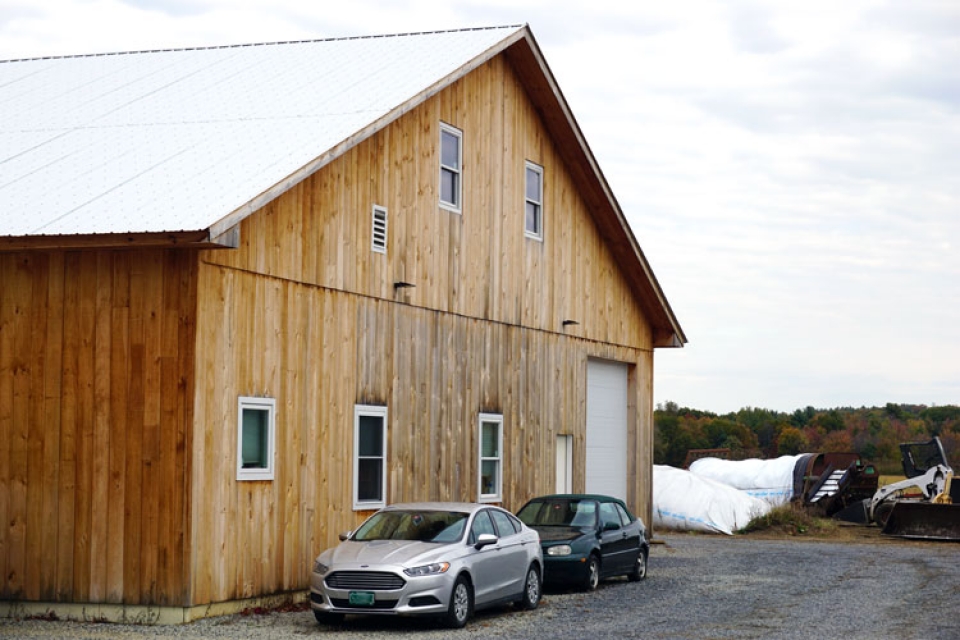Farm Visit: LaPlatte River Angus Farm
I had the pleasure of joining our Meat and Seafood Manager, Jamie, and our Meat and Seafood Buyer, Nick, on a visit to LaPlatte River Angus Farm’s new inspected livestock processing facility in Milton, VT. Considering we get 1,600 - 2,000 pounds of beef from LaPlatte River Angus Farm each week (that’s 4 sides of beef per week, averaging between 400 and 500 pounds each), we were appreciative of the opportunity to check out the new facility and to see how the process works.
We took a tour of the facility, viewing each stage in the process, from start to finish. John and his crew currently move about 13 beeves through the facility each week, and there is room to expand, including plans to finish a smokehouse attached to the facility. All the heat and hot water for the building is wood-fired, and the water from the facility is filtered through a permitted underground septic system.
Nick saying hi to the cows
Vermont Farm to Plate identified livestock slaughtering and processing as a bottleneck in meat production in Vermont in 2010. The number of state and federal commercial red meat slaughter and processing facilities in Vermont fell from 14 in 1997 to 8 in 2010, while the number of state and federal commercial red meat processing facilities (no slaughter) fell from 23 in 1997 to 14 in 2010. While Vermont Farm to Plate reports that the state does have enough square footage to slaughter a consistent number of livestock each week throughout the year, the bottleneck really comes from the seasonality of livestock production. Peak demand for slaughterhouse and processing facilities is September through January, leading farmers to book slots more than 6 months in advance to ensure they’ll be able to process their animals on time. Facilities may then run under capacity for the rest of the year.
John Kleptz and his family wanted to address this issue for their farm by building their own inspected slaughterhouse and processing facility. This allows them more control over the process, and they are able to ensure their products will make it to market when needed.
In addition to the facility, John also houses about 200 cows onsite, both on pasture and in covered barns. The cows live on pasture 15-19 months and then are finished in the barn for about 3 months on a mix of corn and sudan grass before being slaughtered. John rotates a mix of forages in his fields without spraying any herbicides or pesticides – first he plants wheat and rye with field peas (which he cuts for haylage), then he plants sudan grass (a grass good at adding organic matter to the soil) for a first cut of hay and then a second crop for grazing. He then plants winter rye for overwintering.
John Kleptz talking about his pastures
It was a great experience to view a livestock processing facility first-hand, and we’re glad that the Kleptz family now has the ability to process their own cattle onsite in Milton. If you have any questions about LaPlatte River Angus Farm, please feel free to speak with Jamie and Nick in Meat and Seafood!
